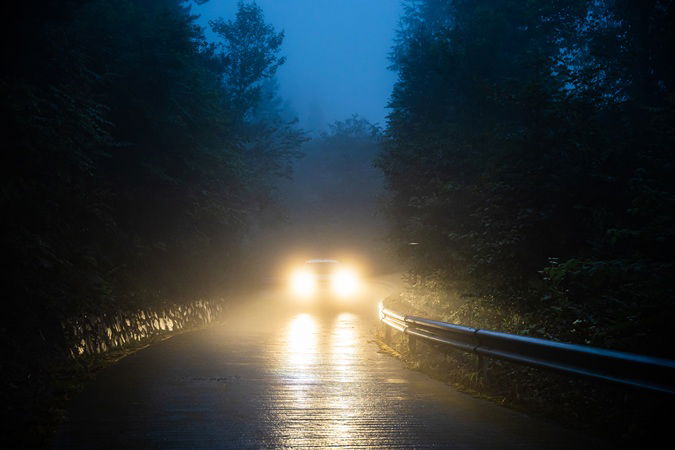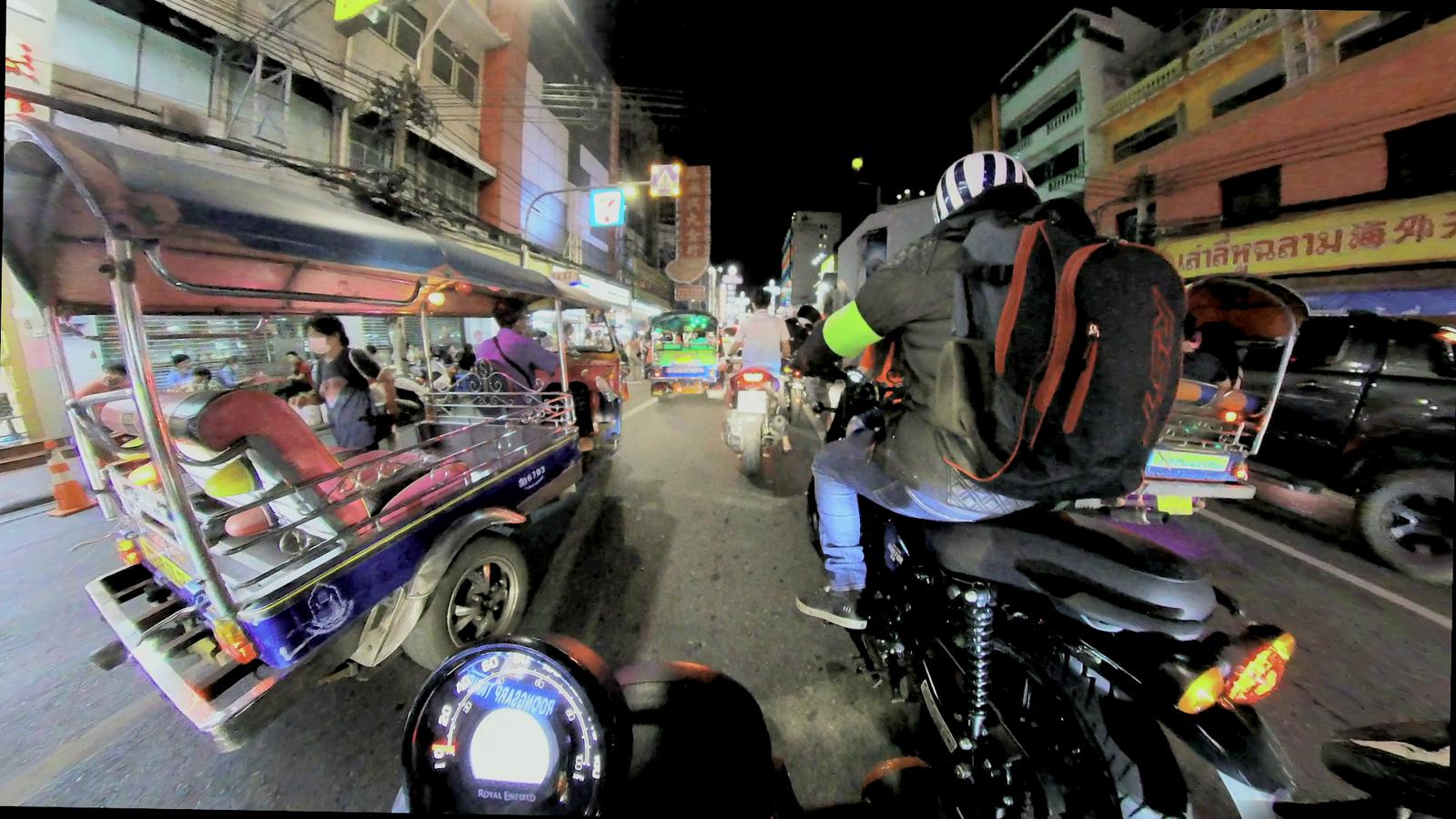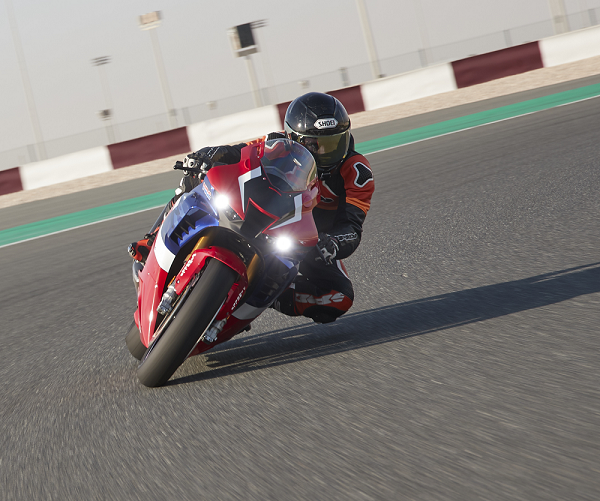Top eye surgeon weighs in on bright headlight debate
After a government report revealed that headlamp glare is a very real problem, an eye surgeon explains the risks.
.jpg?width=1600&aspect_ratio=16:9)
If you’ve ridden at night recently and found yourself squinting through your visor at a sea of dazzling white beams, you’re not alone — and now we’ve got the data to prove it. A new Department for Transport (DfT) study has confirmed what many of us on two wheels have been shouting about for years: modern vehicle headlights are getting far too bright, and the glare they cause isn’t just annoying, it’s dangerous.
And according to ophthalmic surgeon Dr Romesh Angunawela, consultant ophthalmic surgeon at London’s OCL Vision clinic, Moorfields Eye Hospital, the consequences could soon become deadly. He said:
“Great engineering isn’t always great for human biology. The intensity, focus and wavelength of LED headlights can badly dazzle the drivers of oncoming vehicles — and when you’re driving at speed, even a few seconds of blindness could be disastrous.”
Headlamp glare – a growing problem for everyone, but worse for bikers

To get to grips with the issue, the DfT used an instrumented car fitted with luminance sensors, cameras, and even machine learning software to measure the brightness of oncoming lights. At the same time, an RAC survey asked nearly 1,900 UK motorists about their experiences of glare.
The results were stark. More than half of drivers said they had reduced or stopped driving at night because of the brightness of modern headlights — with “whiter” LED lamps and taller vehicles like SUVs pinned as the worst offenders.
But if it’s bad from the comfort of a car, try dealing with it from a bike, with no tinted windscreen to hide behind.
Riding into a wall of light
.jpg?width=1600)
Motorcyclists often sit lower than car drivers — closer to the beam height of oncoming SUVs — and unlike drivers, we lean into corners, changing the angle of our visor relative to the glare. Add rain, road spray, scratches and dirty helmet visors, and what should be a relaxing evening ride can become a full-blown sensory assault.
Dr Romesh warns that biology plays a major role too:
“From our 50s onward, the lens inside the eye becomes less clear, which scatters light and creates dazzling halos — this is even worse in riders with cataracts.”
And it’s not just older riders.
“The high levels of blue light emitted by LED headlights can cause glare for anyone wearing glasses or contact lenses. If the light passes through anything smeared or dirty, scattering increases dramatically.”
For a rider battling glare mid-corner, that scattered light can mean one thing: delayed reactions — just when you need them most.
The science of dazzle
The DfT’s on-road tests found that when light hitting a driver’s eyes exceeded 40,000 candela per square metre, glare reports spiked sharply. Around 20% of all scenes recorded crossed that threshold. Cresting a rise, heading uphill or rounding a right-hand bend greatly increased the likelihood of being dazzled — all situations motorcyclists know well.
Again, Dr Romesh stresses the safety implications:
“When you’re travelling at speed, even a two-second ‘white-out’ could be disastrous. As the nights draw in, it’s only a matter of time before headlight glare has deadly consequences.”
The human cost is already becoming clear. More than half of drivers in the survey said they’ve cut back on night driving — or stopped altogether. For bikers, the problem is even more serious, because night riding is often the best time to enjoy traffic-free roads.
But as Dr Romesh points out:
“Not being able to drive is severely life-limiting if you don’t have public transport. Headlight glare has become a major problem — and the Government must act now.”
Why headlight glare hits bikers harder
Lower seating position – directly in the beam path of taller vehicles
Helmet visors – scatter light when dirty, scratched or wet
Lean angles – distort light mid-corner
Wet roads – double the glare with reflections
And unlike car drivers, we can’t dip mirrors, dim glass, or rely on driver-assistance systems to shield us.
What can be done?
.jpg?width=1600)
The DfT is calling for further research, better public education, and new regulations focusing on luminance — what the eye experiences — rather than just raw light output. But medical experts say change must come fast.
“The laws on vehicle headlights haven’t kept up with LED technology,” says Dr Romesh. “The case is now overwhelming for stricter regulations — before we see a serious rise in accidents.”
He also noted that newer implantable ‘EVO ICL’ lenses may help some riders with glare — offering clearer night vision than standard contacts or glasses. They’re reversible, fitted internally, and far less prone to scatter.

Dazzled but not defeated
Until change comes, riders are left to cope. That means spotless visors, working Pinlocks, anti-fog coatings — and keeping a defensive mindset when the next four-wheeled welding torch comes around the bend.
Headlight glare isn’t just uncomfortable. It steals reaction time and hides hazards — and for motorcyclists, it only takes one missed hazard to change a life.
The data confirms it. The science explains it. And Dr Romesh puts it bluntly:
“It’s only a matter of time before headlight glare has deadly consequences.”
We’ve been shouting about it for years. Now the Government — and the medical profession — is finally listening. The question is whether they’ll act before it’s too late.
Find the latest motorcycle news on Visordown.com


